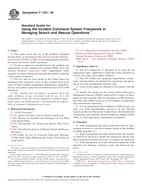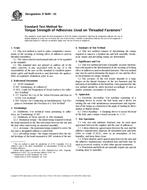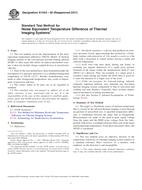1.1 The purpose of this test method is to provide an impact test that can be performed on small specimens of plastics of different thicknesses. This test method is especially suited for observing the effects of microcracks caused by weathering, or by exposure to solvents or other hostile environments, on the surface of plastic materials. It is not meant to be used as a replacement for any existing impact test, but can be used to measure impact on coupons machined from finished parts that cannot be tested by the drop-weight, Izod, or Charpy method because of shape or thickness limitations.
1.2 The chip-impact test is run on small, flat, unnotched specimens using a standard pendulum-impact device. The test places the impacted surface in tension and, for notch-sensitive materials, is extremely sensitive to the presence of surface microcracks. Thus, for plastics that develop surface cracks when exposed outdoors, the chip-impact test is a severe test of the weathered impact strength.
1.3 Round-robin testing has indicated that materials that break at total energy values of less than 0.17 joules [1.5 in.-lbf] have within-laboratory coefficients of variation of approximately 30 %. Therefore, such values are considered out of the normal testing range for this test.
1.4 The values stated in SI units are to be regarded as the standard. The values given in brackets are for information only.
1.5 There is no ISO equivalent to this test method.
1.6 This standard does not purport to address all of the safety concerns, if any, associated with its use. It is the responsibility of the user of this standard to establish appropriate safety and health practices and determine the applicability of regulatory limitations prior to use.
Product Details
- Published:
- 02/01/2004
- Number of Pages:
- 6
- File Size:
- 1 file , 100 KB


